With the planet heating up, it’s only going to get hotter from here on out. Are you prepared? My late hubby used to blast us with a pedestal fan on maximum, together with the ceiling fan while I buried myself under the blankets. (Yes, we did have different temperature statuses…) These days Nicky needs his pedestal fan to fall asleep in summer and I have a desk fan to keep cool at work too. I also have air con in the bedroom for when it’s really hot at night.
But if you’re looking for different options for different rooms, different budgets and different needs, I’ve got you covered with this comprehensive post comparing the different fan choices out there, before you spend your hard earned money. If you’re on the hunt for fans, you can also check out the huge range of Bash Fans and see what catches your eye.
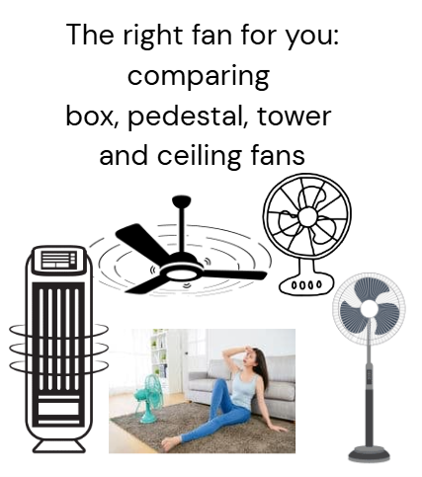
Choosing the right fan isn’t just about staying cool—it’s also about comfort, practicality, and enhancing your home environment with better air movement. Having a reliable fan can make all the difference in creating a pleasant space during the heat.
Ceiling Fans
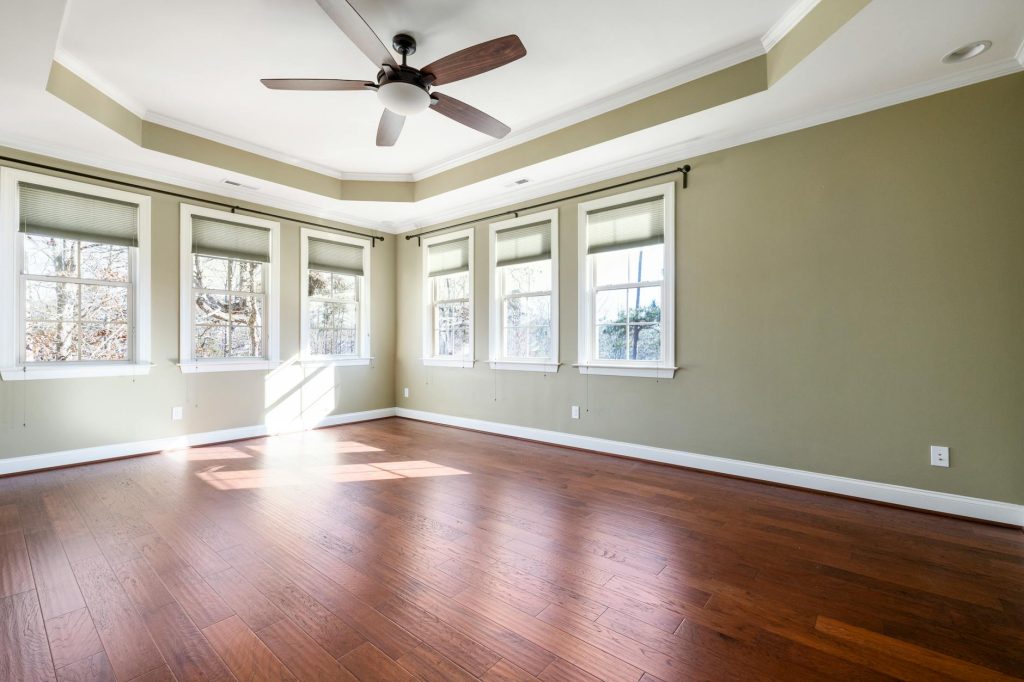
Fans mounted on the ceiling are a staple in many South African homes, combining both practicality and style for beating the summer heat. These axial fans sit at the heart of the ceiling, spinning quietly to create steady air movement that cools a room without using much electricity. From classic white blades to sleek wooden finishes, you’ll find a range of designs to suit any decor. Let’s dive in and see why these fans are a favourite when comparing types of fans for home cooling.
Key Features: Blade Materials, Reversible Motors, Remote Controls and Smart Integration
These overhead fans aren’t just big, spinning paddles—there’s a surprising amount of variety out there! Here’s what makes these fans stand out:
- Blade Materials: Most fans come with blades made from one of three materials: wood (often lightweight or laminated for easy cleaning), metal (tough and modern-looking), or plastic (budget-friendly and durable). Wooden blades tend to offer quieter operation, which is great if you want peace and quiet in your bedroom.
- Reversible Motors: Many models are equipped with a reversible motor function. In summer, you’ll want the fan spinning in one direction to push cool air down, but come winter, reversing the direction helps circulate warm air. This twist adds year-round value, making your investment go further.
- Remote Controls: The days of dangling pull cords are fading fast. Modern fan units often include remote controls, letting you adjust speed, lighting (if the fan includes a light), or direction without hopping off the couch.
- Smart Integration: For those who love tech, smart fans can connect with your Google Home or Alexa. Imagine turning your fan on or off with a quick voice command or smartphone tap—pretty handy for hot summer nights.
Airflow and Coverage: Room Size and Cooling Impact
- Coverage Areas: Use a small fan for rooms under 10 square metres, go for a medium fan (92 to 123 cm) for spaces up to 20 square metres, and a large fan (over 132cm) for 25 to 35 square metres. Open-plan homes or bigger living rooms call for even wider blades or multiple fans.
- Cooling Impact: This type of fan doesn’t actually lower air temperature, but thanks to the cooling effect created by air movement, it can make you feel up to 4°C cooler. This wind-chill illusion lets you raise your aircon set point, saving electricity while still feeling comfortable in the heat. For a deeper look at airflow and year-round comfort, check out these best ceiling fans for South African homes.
Installation and Maintenance: Mounting, Wiring Basics and Cleaning Blades
Getting one of these fans up and running can be a little more hands-on than plugging in a pedestal fan, but the payoff is worth it. Here’s what to expect with installation and care:
- Mounting: Most fans require a solid ceiling joist and come with a mounting bracket. The bracket keeps the fan stable and ensures safe spinning. Low ceilings may call for a “hugger” or flush-mount design, while high ceilings use a downrod to drop the fan to just the right level.
- Wiring Basics: Safety is paramount! Unless you’re a confident DIYer, call an electrician for the wiring. Fans typically connect to the lighting circuit, and you’ll want everything neat and secure. Incorrect wiring can not only break the fan, but also pose a fire hazard.
- Cleaning Blades: Even with the best fans, dust piles up. Turn off the power before cleaning, then use a step ladder and a gentle microfibre cloth or vacuum attachment. Try not to press too hard on the blades—they can get bent out of shape easily.
Ideal Rooms: Best Placements for Living Rooms, Bedrooms and Open-Plan Spaces
These fans are a flexible cooling option for all sorts of spaces, especially if you want to keep energy use low while still staying cool:
- Living Rooms: A classic lounge is the perfect place for a fan, as it’s often the busiest and warmest spot in the house. Go for a model with wider blades if your living room is large or open plan.
- Bedrooms: A quiet fan (with wooden or plastic blades) at low speed can keep you comfortable on hot nights without making a racket. Choose a fan with a remote control for easy adjustments from bed.
- Open-Plan Spaces: For homes with big living and dining areas combined, install more than one fan or choose a larger, high-CFM model to cover more ground. This also greatly improves ventilation, keeping indoor air fresh and breezy.
Fans of this design aren’t usually the best fit for small kitchens or bathrooms with low ceilings, but in any big, busy space, they offer reliable, steady airflow that really does make summer more bearable.
Tower Fans
Tower fans bring a sleek, modern profile to your home. These tall, slim units fit where wall and box fans simply can’t. Acting as efficient air circulators, they oscillate silently from side to side, sending a cool breeze across the room—providing a refreshing cooling effect like a gentle wind sweeping through your flat or office. If you’re working with a narrow hallway or tucking the fan next to your bed, it won’t hog floor space. Most tower fans even look stylish enough to blend in, sitting quietly in the background. Let’s break down what tower fans offer and how they measure up for keeping your space cool in summer.
Key Features: Detail LED displays, remote control, air‑purifying filters if any
Tower fans are known for features that take cooling beyond just spinning blades. You get a lot of convenience packed into a small footprint:
- LED displays give you real-time info on speed, timer settings, and sometimes even room temperature. It’s clear at a glance what the fan’s doing, even in dim lighting.
- Remote controls mean you can change speed, mode, or oscillation without getting up. It’s a little touch that makes lazy evenings or busy office days easier.
- Adjustable timers let you set the fan to switch off after a few hours, perfect for falling asleep without worrying about wasting electricity.
- Some models include air-purifying filters. These catch dust, pet hair, and pollen so your cool air is fresh and clean. While not every fan comes with this option, it’s a nice perk if allergies are a concern.
Many tower fans use a cross flow fan design, which is a type of centrifugal fan. This mechanism helps create the vertical airflow characteristic of these units, ensuring consistent air movement throughout your room. Bladeless tower fans have also become popular for their quiet operation and futuristic looks. For a quick scroll through available options, visit the Yuppiechef summer fans page.
Airflow and Coverage: Explain airflow direction, and effectiveness in small to medium rooms
Tower fans shine in rooms where you don’t need to blast everyone’s hair back. Their design pushes a vertical column of air, which then moves in a wide arc thanks to oscillation. This kind of airflow creates smooth air movement that cools evenly rather than just hitting one spot.
- You can point the airflow in the direction you want, and the oscillation makes sure no one misses out on the breeze.
- With low noise output, these fans stay quiet enough for naps or meetings. You’ll notice a soft white noise—nothing like the clatter of some old-school fans.
Thanks to their vertical design and oscillation, tower fans excel as efficient air circulators that maintain comfortable air distribution. If you want to brush up on how airflow affects comfort in summer, the types of fans for summer cooling selection on Takealot offers plenty of clear examples.
Here’s a round-up of tower fans and personal cooling solutions for a closer look at options and details.
Installation and Maintenance: Mention plug‑in setup, tip cleaning and filter replacement
Tower fans are plug-and-play with zero fuss. Just take it out the box, find an outlet, and it’s running in minutes. You won’t fuss with wiring or drill bits, which is a huge relief for anyone not keen on DIY.
Maintenance is simple, too:
- Dust the exterior regularly. The slim build means dust does gather in the vents, so give it a quick wipe or use a soft brush attachment on your vacuum.
- For models with filters, remove and rinse the filter as often as the manual says. A clean filter keeps things running smoothly and the air fresher.
- Always unplug before cleaning for safety.
Tower fans last longer with regular care, and unlike ceiling fans, you don’t have to balance on a ladder.
Ideal Rooms: Recommend for apartments, home offices and narrow hallways
Tower fans are ideal for spaces where floor room is at a premium. Their upright shape and quiet running mean you can slip one into:
- Apartments: Perfect for one-bedroom flats or granny cottages. They don’t compete for space with your coffee table or bookshelf.
- Home offices: Place a tower fan beside your desk for steady, quiet cooling. You stay comfortable and keep your energy up without blasting paperwork everywhere.
- Narrow hallways: The slim build is a lifesaver in tight spaces. It’s tall and stable, so you won’t trip over a bulky base.
Box Fans
Box fans are the reliable workhorses among the different types of fans ideal for summer cooling. Their classic square frame makes them easy to move from room to room, while the axial fan design delivers powerful direct airflow when temperatures rise and you need quick relief. Built with practical use in mind, these floor fans combine simple controls with durability, making them a no-nonsense solution for big, hot spaces.
Key Features: Metal Housing, Adjustable Speed Settings, and Battery Options
What makes box fans stand out from other fan types? It comes down to a set of thoughtful features designed for everyday convenience.
- Strong metal or sturdy plastic housing provides lasting durability, especially useful if you’re moving the fan between your workshop, patio, or garage.
- Grid blades are safeguarded by a robust grille, enhancing safety for homes with curious children or active pets. The protective grille also reinforces overall rigidity, preventing chips or cracks if the fan gets bumped.
- Adjustable speed settings allow you to customize airflow, whether you want a light breeze or maximum ventilation.
- Some models include battery options, effectively turning the box fan into a cordless fan for added portability—perfect during brief power outages or in areas without easy access to outlets.
- Occasionally, a swing (oscillation) function is included, which helps distribute air movement over a wider area. While less common than with tower fans, it’s a useful bonus when available.
Choosing between metal and plastic depends on how rugged you are with your equipment and how often you plan to relocate the fan. Most box fans are designed to handle some rough treatment while keeping all components intact.
Airflow and Coverage: Suitability for Larger Spaces or Patios
Box fans truly excel when you need strong air movement fast. Known for their functional design, how much space can they effectively ventilate?
- Because they blow air in one steady direction, box fans allow you to target a specific area for instant cooling—aim it at your workbench, braai area, or home gym.
- Models equipped with oscillation can extend airflow even further, but even without it, the direct thrust is remarkably powerful.
For a detailed look at airflow performance, check out this Plastic Box Fan 5 Blade – Efficient Cooling for Home for an example of what’s achievable.
Installation and Maintenance: Safe Placement, Cleaning Grille, and Protecting from Moisture
Box fans offer easy plug-and-play operation and require minimal upkeep, but safety should always come first.
- Safe placement is crucial. Always position your box fan on a stable, flat surface to avoid accidents—a sturdy fan tipping over could cause injury.
- Ensure the blades are free from obstructions like curtains or loose papers that might get drawn into the grille.
- Cleaning is simple: unplug the fan, then wipe the grille and blades with a cloth or soft brush. Many grilles unscrew for thorough cleaning; if not, regular dusting keeps it running smoothly.
- Avoid exposure to heavy moisture. While excellent for outdoor patios, these fans should be kept away from rain or puddles. If you’re using the fan outdoors, move it under an awning or indoors when bad weather approaches.
A little attention to safety and regular maintenance will extend the life of your box fan and ensure it’s ready for the next heatwave.
Ideal Rooms: Best for Garages, Workshops, Outdoor Patios, and Temporary Cooling
Box fans are designed to thrive in spaces where other types of fans might struggle, making them perfect for tackling tough summer heat.
- Garages and workshops: These often noisy, hot environments demand robust airflow. As an industrial fan, the box fan can power through dust and heat, creating breathable conditions during big projects.
- Outdoor patios: Ideal for stirring air and keeping insects at bay during family gatherings or braais, but remember to watch the weather.
- Temporary or portable cooling: Easily moved from room to room or outdoors, the box fan adapts to wherever cooling is needed.
- Large open rooms: Whether it’s a combined living and dining area or a temporary event space, its portability and power make it easy to target hot zones.
As a dependable and versatile floor fan, box fans demonstrate that sometimes the simplest fan can make the biggest difference. For those interested in outdoor-rated options, you can browse Outdoor Box Fan selections complete with specifications and user feedback. When direct power and flexibility matter most, this classic solution is hard to beat.
Pedestal Fans
Pedestal fans are a common sight, especially when the sun is scorching and you need a quick cooling effect. As a prominent type of floor fan, pedestal fans are prized for their adjustable height, sturdy base, and powerful air movement. These features make them a popular choice for those seeking flexible, strong airflow without the hassle of more permanent ventilation solutions. Let’s explore why the pedestal fan remains a trusted option among the variety of fans available both in stores and online.
Key Features: Detail Oscillation, Tilt Head, Remote Control and Built‑In Timers
One of the main reasons people opt for a pedestal fan is the impressive range of convenient features they offer:
- Oscillation: Most pedestal fans feature axial fan blades that sweep air back and forth, distributing cool air evenly throughout the room. Whether you’re relaxing with family or sharing space with energetic kids, oscillation ensures everyone enjoys the airflow.
- Tilt head: You can direct the airflow precisely where it’s needed. Tilt the fan upwards for a gentle breeze while lying down or angle it downward to cool tired legs after a warm walk.
- Adjustable height: Unlike many other types of fans, pedestal fans offer significant flexibility—you can raise or lower the stand to position the airflow perfectly for sitting, lying, or standing.
- Remote control: Many new pedestal fan models come with a remote, allowing you to adjust speed or power from across the room, adding true convenience to your cooling experience.
- Built-in timers: Want to fall asleep comfortably with a breeze on without wasting electricity? Set the timer so the fan shuts off automatically, saving both power and money.
Airflow and Coverage: Discuss Airflow Strength, and Coverage Radius
Pedestal fans deliver serious air movement thanks to their wide axial fan blades designed to move high volumes of air with ease:
- Adjustable direction: The combination of oscillation and tilt enables you to control the airflow radius, spreading cool air to various corners or focusing it on a single area for maximum cooling effect.
- Even coverage: Pedestal fans provide consistent, level airflow that minimizes hot spots—an issue often experienced with smaller or less advanced fans.
Installation and Maintenance: Explain Plug‑In Use, Stabiliser Base, and Blade Cleaning
In today’s busy world, no one wants complicated setups. Pedestal fans offer hassle-free installation and maintenance:
- Plug-and-play: Assembly is quick and simple, usually taking less than fifteen minutes from unboxing to cool air circulation. Just plug the fan into a wall socket, and it’s ready to go.
- Stable base: The wide stabiliser—whether a round plate or classic tripod legs—keeps the fan upright and wobble-free, even on slippery tiled floors.
- Minimal maintenance: Dust buildup on blades is easily managed. Simply unscrew or unclip the grille, wipe the axial fan blades with a cloth or rinse with soapy water if necessary, then reassemble. Always unplug the fan before cleaning for safety.
Some high-end pedestal fan models include extra stability features to reduce wobbling at high speeds, helping keep the motor quieter and prolonging its lifespan.
Ideal Rooms: Suitable for Bedrooms, Study Areas and Rooms Where Floor Space Is Limited
The versatility of pedestal fans makes them perfect for a range of rooms and situations, delivering excellent ventilation where it’s needed most:
- Bedrooms: Position a pedestal fan at the foot of your bed or next to a nightstand to enjoy a quiet, cool breeze through the night—low settings ensure it won’t disturb your sleep.
- Study areas: For long hours at the desk, targeted airflow from a pedestal fan keeps you comfortable and focused even on hot days.
- Spaces with limited floor area: A pedestal fan, as a compact floor fan, fits neatly between furniture or beside cupboards where bulky box fans or air conditioning units won’t work.
- Temporary setups: Need powerful, portable ventilation? Pedestal fans can be easily moved from room to room, providing quick relief wherever it’s needed.
Bridging the gap between permanent ceiling fans and ultra-portable desk or clip-on fans, pedestal fans are a practical choice. For models suited specifically to South African needs, explore the selection on Pedestal Fans South Africa.
Thanks to their strong cooling effect, simple setup, and versatile adjustability, pedestal fans keep summer comfortable no matter the room or routine.
How to Choose the Right Fan for Your Home
There’s nothing quite like the first blast of a fan on a sweltering summer day. But with so many types of fans on the market, making the right choice for your space, your wallet, and your sanity takes a little thought. Picking the best fan isn’t just about grabbing the first option that promises a “cooling effect” on the box. It’s about matching what you need right now with what each fan offers — and making sure you won’t regret it when the heat peaks or the power bill arrives.
Let’s break down what actually matters when you’re shopping for a ceiling, tower, box, or pedestal fan. The trick is to find the sweet spot where budget meets comfort, keeping both the sweat and the surprises to a minimum while ensuring good air circulation.
Choosing by Room Size
Room size can make or break how well a fan works. A small tower or compact pedestal fan will leave you melting in an open-plan space, but a box fan in a tiny bedroom will send your curtains flying. To get it right:
- Small rooms (under 10 square metres): Tower fans, desk fans, or small pedestal fans offer enough breeze without taking over your floor. Ceiling fans also work well if you want a permanent solution.
- Medium rooms (10-20 square metres): This is the home turf of regular pedestal fans, box fans, and standard ceiling fans.
- Large rooms (up to 35 square metres): Consider a big ceiling fan or two, or powerful box fans with high CFM ratings. Oscillating pedestal fans also spread air across wider spaces.
- Oddly shaped or cramped spaces: Tower fans fit great in corners or beside furniture, saving space and blowing air where traditional fans can’t fit.
Budget: Spend Where It Counts
Fans are one of the most cost-effective ways to stay cool, but prices can jump fast depending on features and size. You don’t need to pay a fortune for relief, but a few extra rand can save headaches later.
- Entry-level (R300-R700): Box fans and basic pedestal fans dominate here. They focus on solid cooling power without the bells and whistles. Great for spare rooms, workshops, or when you’re watching your spend.
- Mid-range (R700-R1,500): This bracket opens up remote controls, digital displays, and quieter motors. Ceiling fans and quality tower fans start appearing here too.
- Premium (R1,500+): Now you’re in smart home territory: fans with app support, air purifying filters, or swanky finishes. A good ceiling fan in this range can double as room décor.
Energy Costs: Find the Balance
Every rand adds up. In South Africa, power isn’t cheap and load shedding is always hovering in the background. Lower-wattage fans might cost more upfront, but they keep your electric bill low.
- Ceiling and tower fans usually run at 45W to 90W.
- Pedestal and box fans swing from 60W up to 100W on high.
- Fans with timers or eco-modes help manage your usage automatically, perfect if you forget to hit the off switch.
If you use several fans at once or plan to run them overnight, keep an eye on the rated wattage. For deeper insights on energy (and ways to save a few rand), comparing different fan types from popular cooling options can help narrow down your favourites.
Noise Tolerance: Peace or Power?
We all know the sound: a fan buzzing in the background as you try to watch TV or drift off. Some fans hum quietly, while others rattle your nerves. Think about:
- Bedrooms, nurseries, or study nooks: Go for ceiling or tower fans, or pedestal fans labelled “silent” or “quiet operation”.
- Garages, living rooms, or patios: Box fans and basic pedestals may be louder but deliver a strong blast, perfect when noise doesn’t matter.
- Work from home: If you spend hours on calls, a tower fan offers the best blend of quiet and direct airflow.
Aesthetic Preference: Blending In or Standing Out
Fans can be more than white plastic or chrome. They set the tone, especially in open-plan houses or remodelled flats. Consider:
- Ceiling fans: Come in modern, rustic, or minimalist styles with various blades designs to match your décor.
- Tower fans: Sleek and understated, ideal for hiding next to a plant or bookshelf.
- Box and pedestal fans: Focus on practicality, but some new colours and finishes add a fun touch to entertainment spaces.
- Wall-mounted fans: Are another option for those wanting to save floor space without compromising on airflow.
Shape, finish, and even LED displays can tip the scales when you’re on the fence between types.
Local Climate Matters
South Africa’s weather is anything but boring — sweltering days, unpredictable heatwaves, and of course, the odd power cut. When choosing between fan types:
- Humid coastlines: High-velocity box or pedestal fans move heavier air effectively, helping to fight dampness.
- Hot, dry interiors: Ceiling fans with reversible settings help in summer and winter. Tower or desk fans can supplement during sudden heatwaves.
- Areas with frequent load shedding: Cordless fans and misting fans are a bonus when the power blips, providing portable and energy-savvy solutions.
Keep in mind that an exhaust fan serves a different purpose, focusing on removing stale air rather than providing the cooling effect a fan does.
Quick Comparison Table: Picking Your Perfect Match
To make choosing easier, here’s a table comparing each fan type at a glance:
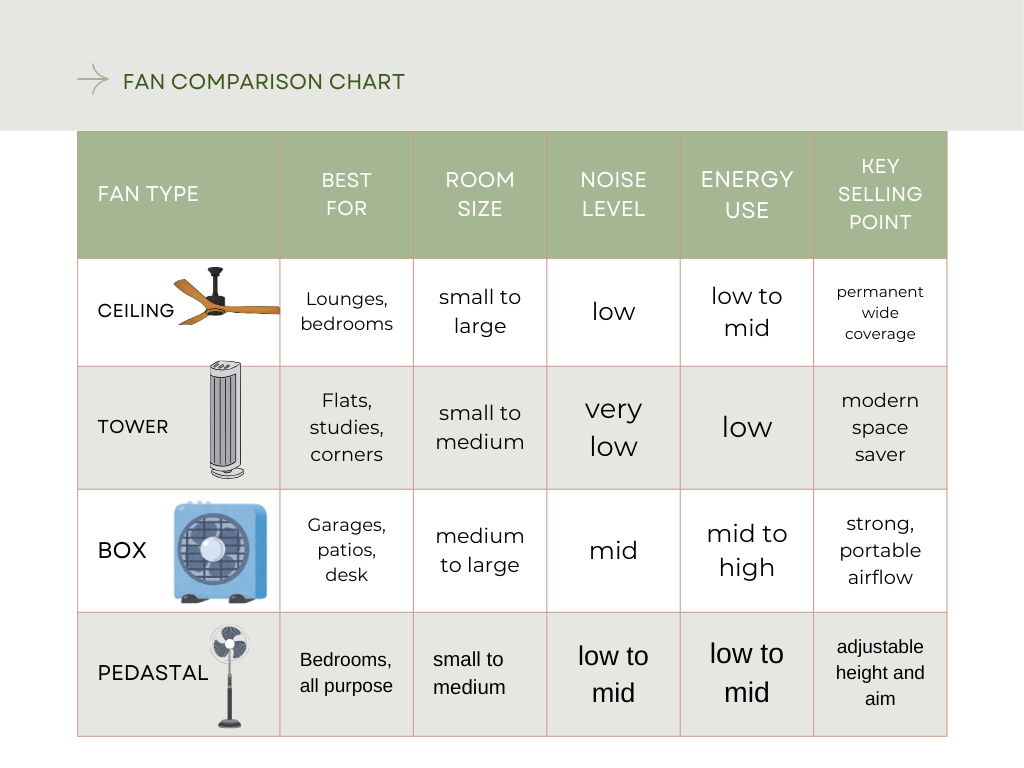
Where to Shop
Finding the right fan is much easier when you have reliable places to buy from. Check out the range at Bash. Big names like Hirsch’s and Game are trusted by locals. You can also check out deals on Loot.
Picking the right fan isn’t about luck. Match your needs to the fan’s strengths, and you’ll get a summer tool that feels tailor-made for your home.
Conclusion
The best types of fans depend on your space, budget and routine. Ceiling fans give whole‑room comfort with low running costs. Tower fans slip into small footprints with modern controls. Box fans deliver fast, direct airflow for less. Pedestal fans add height, tilt and strong coverage without installation. Pick the one that matches your room and how you live, and stay cooler for less this summer.
Disclaimer: This post was sponsored by Bash
Disclaimer: This post contains AI.
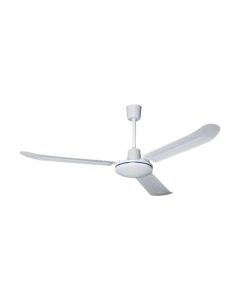
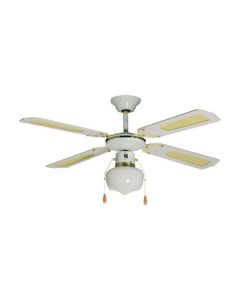
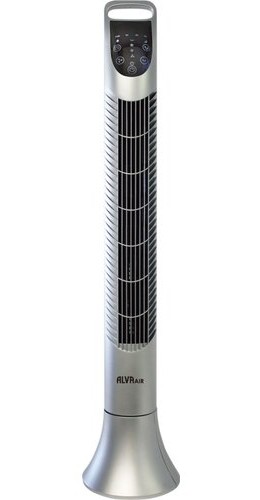
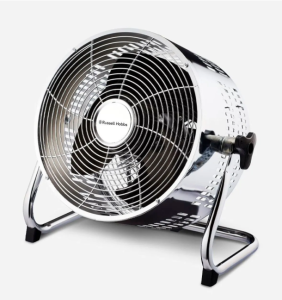
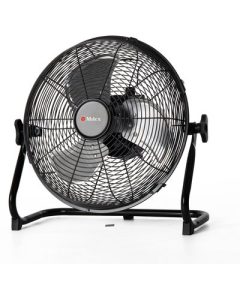
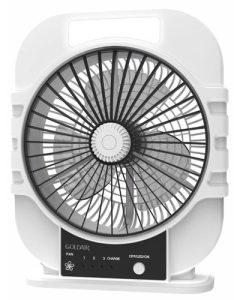
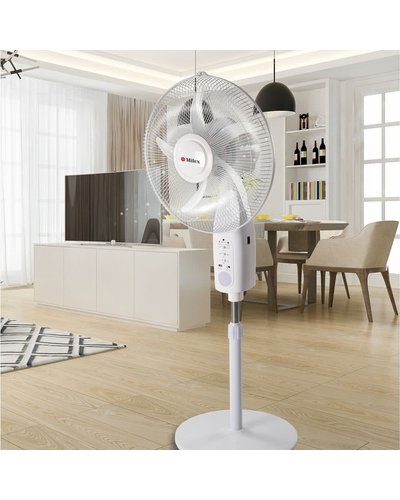
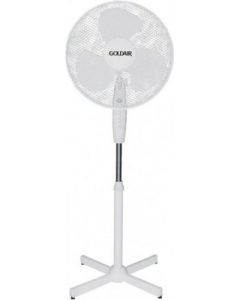
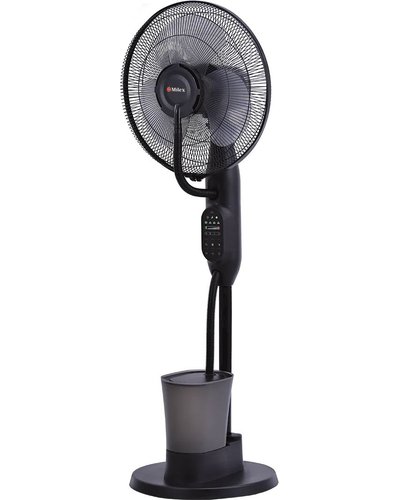



Leave a Reply